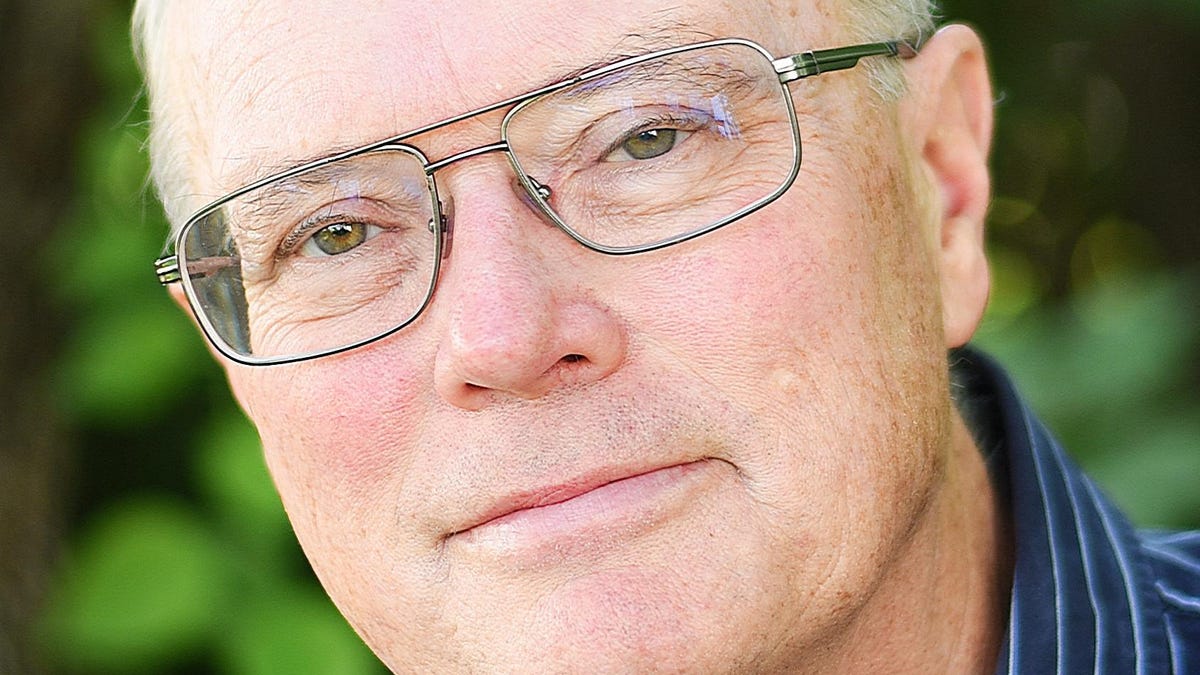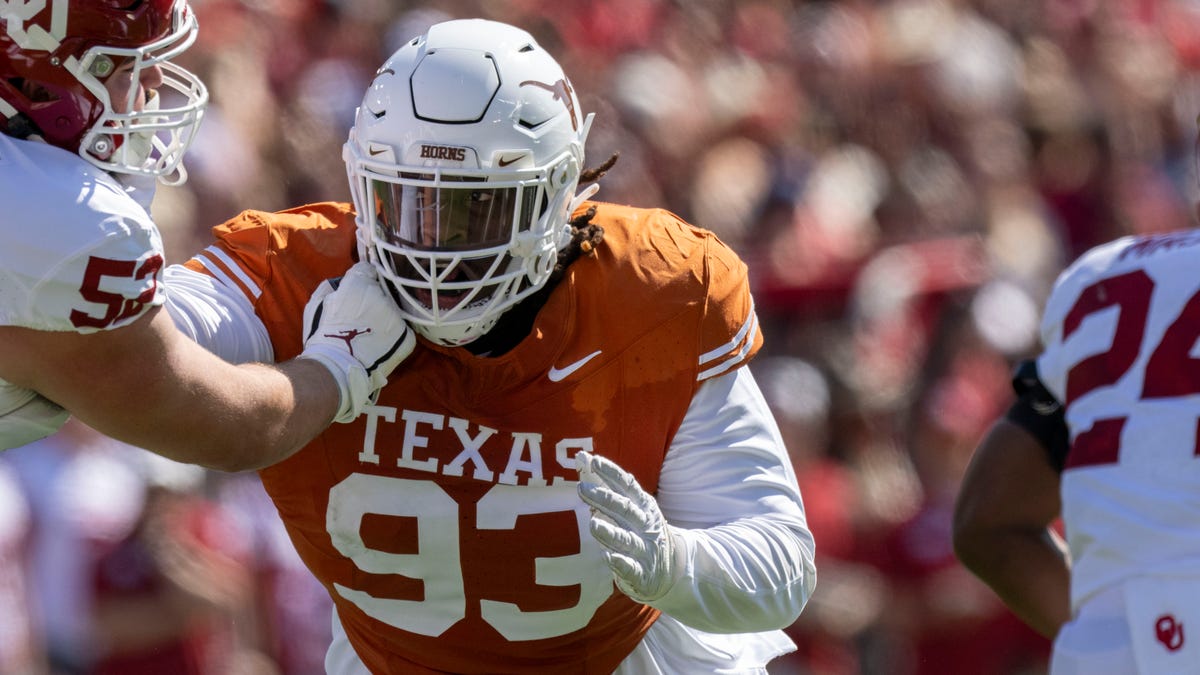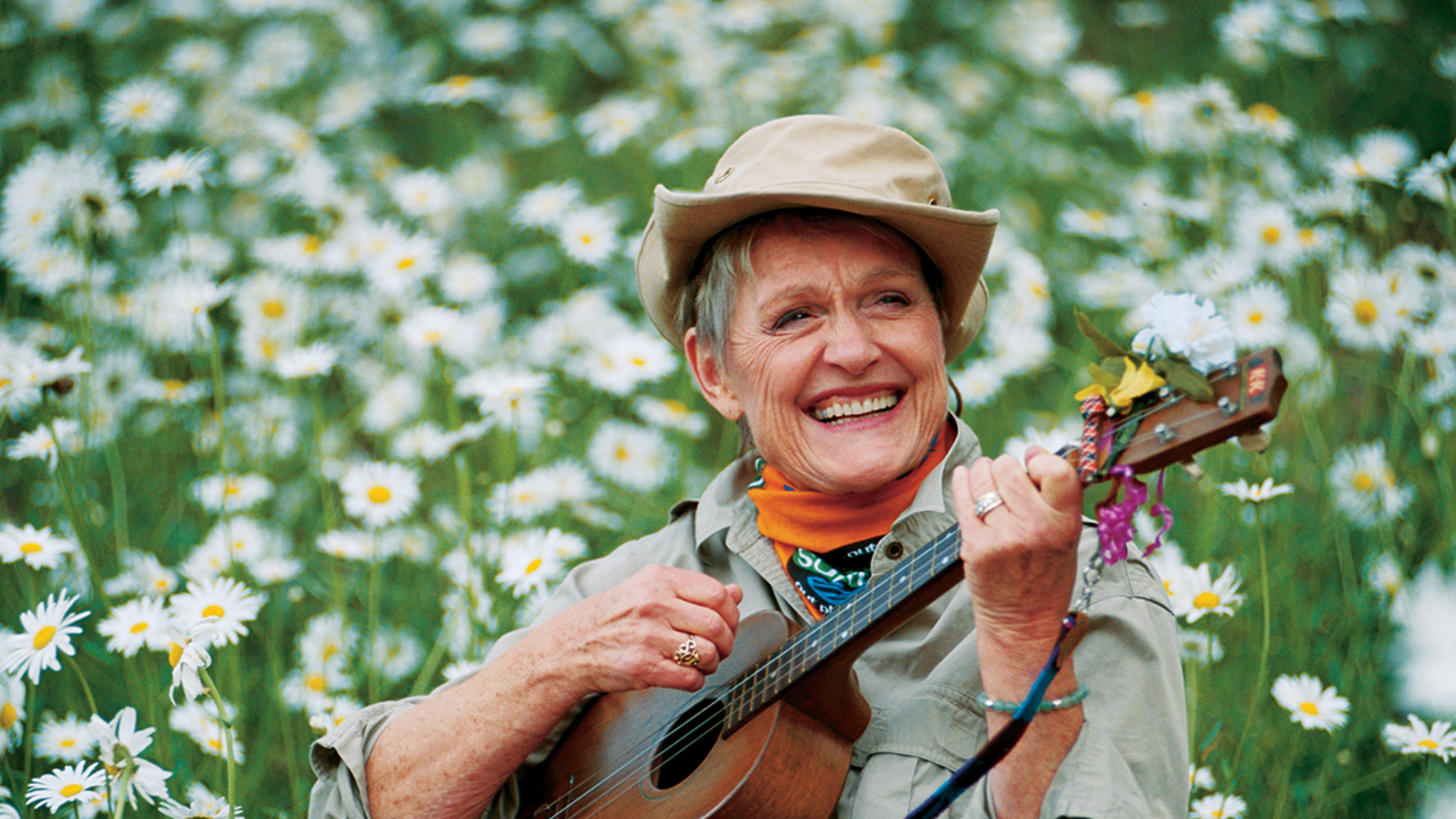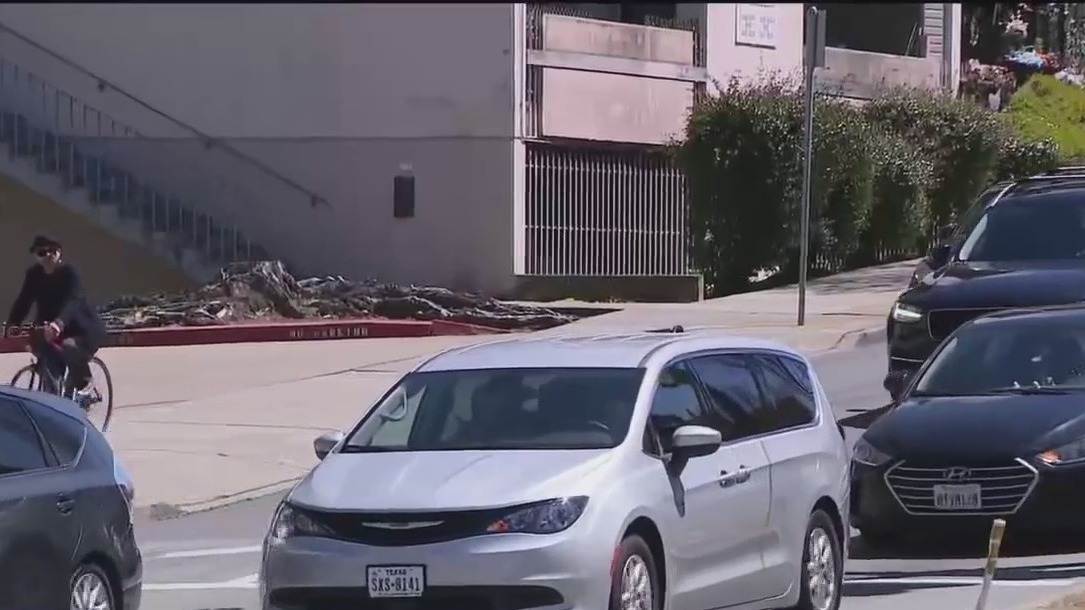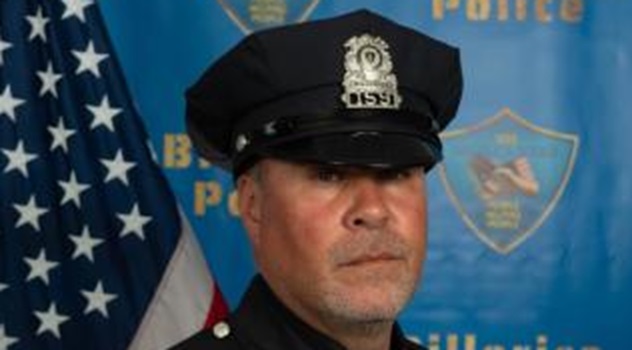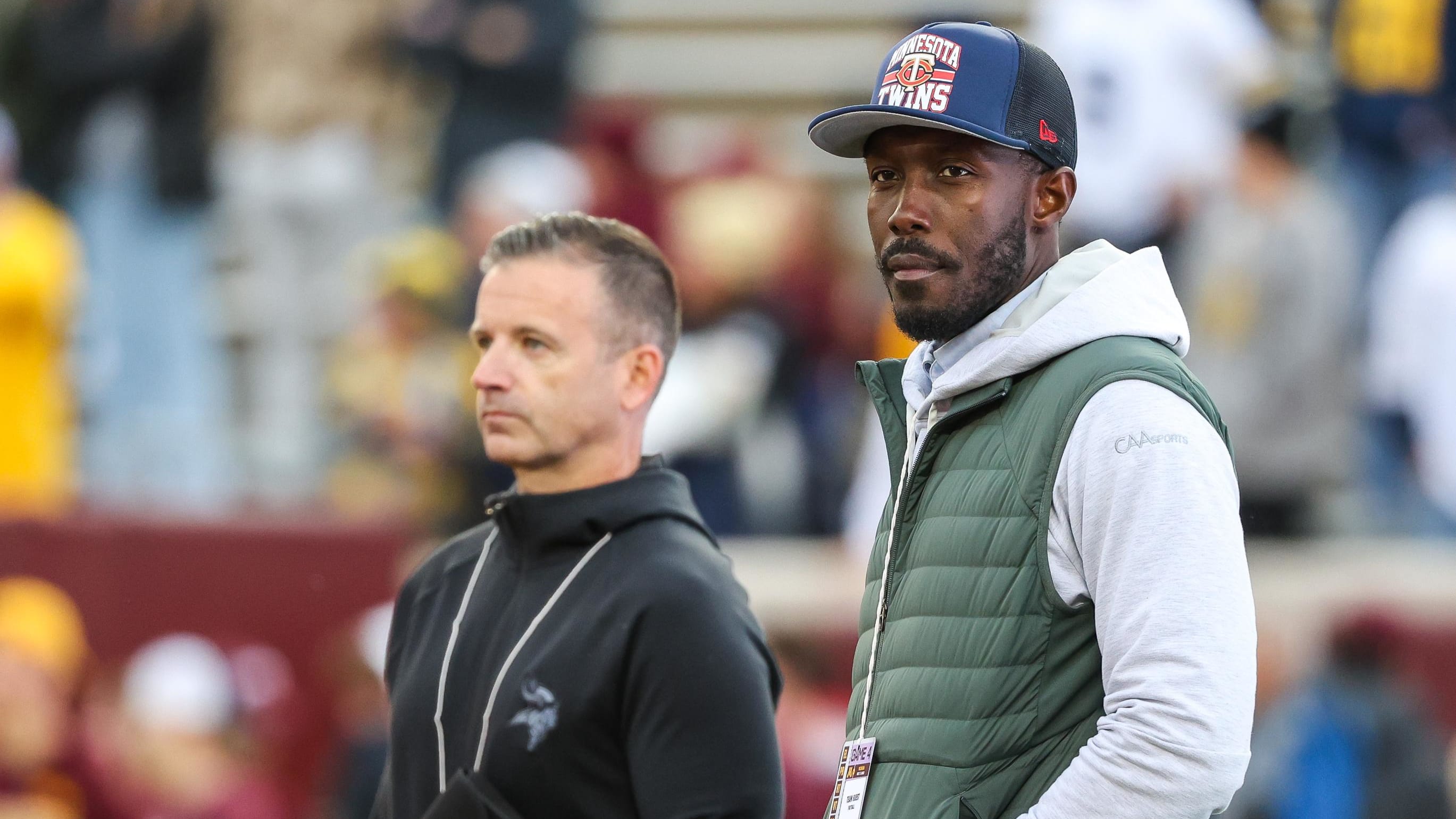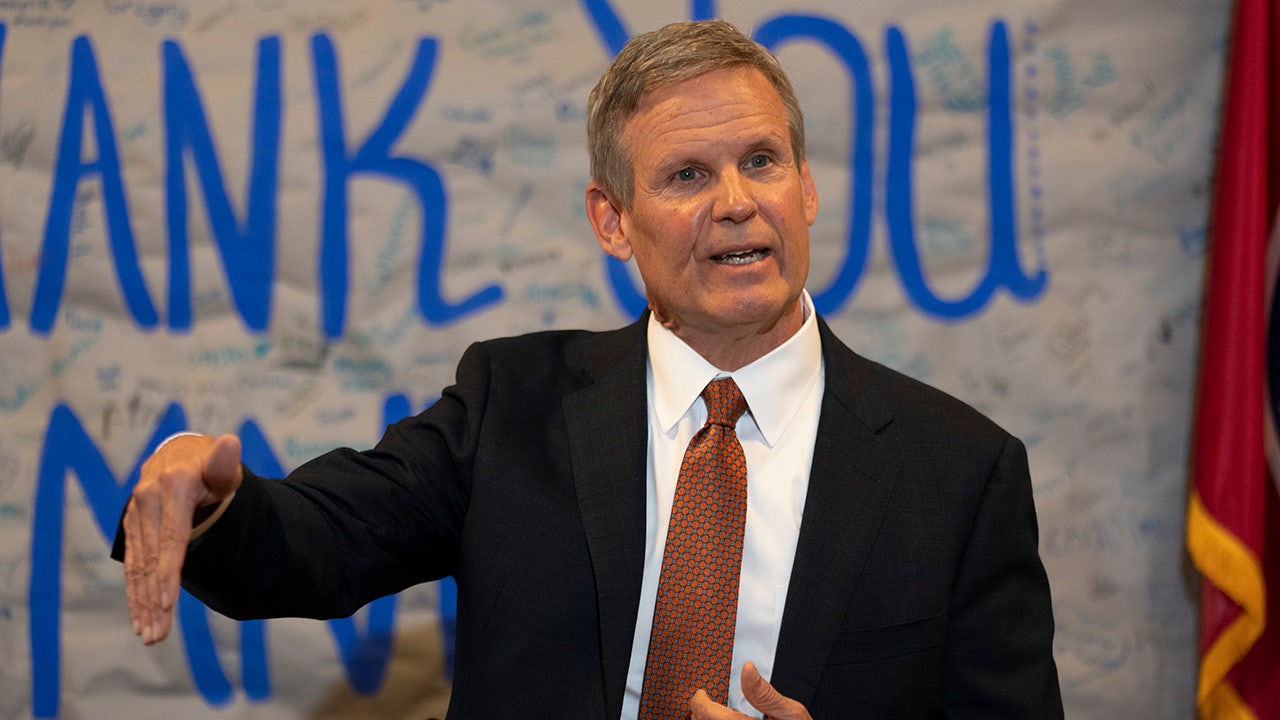Austin, TX
4.7-magnitude earthquake hits southeast of San Antonio, felt all the way near Round Rock
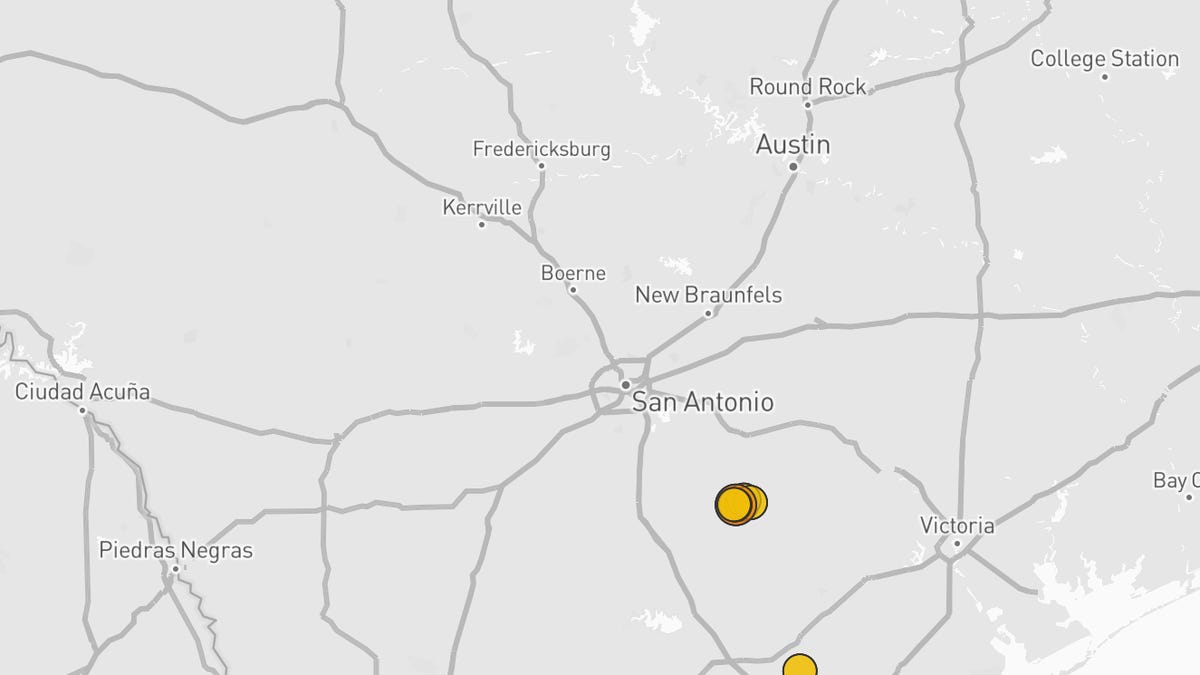
Report: 75% of U.S. at risk of earthquakes
A new seismic hazard model reveals that approximately 75% of the U.S. population could potentially be affected by earthquake impacts in the future.
Fox – 5 NY
Seven earthquakes were recorded on Saturday morning near Falls City, which sits about 40 miles southeast of San Antonio. Two of those were felt by some in Austin and Round Rock.
According to the U.S. Geological Survey, 4.4 and 4.7-magnitude earthquakes were confirmed to have occurred around 6 a.m. local time. In 2024, Texas has experienced 1,022 earthquakes.
The 4.7 earthquake happened around 12:32 a.m. and was felt in Round Rock, according to data from USGS. No damage has been reported.
Statesman data page: See earthquakes in Texas over the past day
When was the last big earthquake in Texas?
In November 2023, a 5.2 magnitude earthquake shook western Texas. The earthquake happened around 4.27 a.m. local time nearly 24 miles southwest of Mentone, Texas, a town near the Texas-New Mexico border, about 57 miles southwest of Carlsbad, New Mexico, and 200 miles east of El Paso, Texas. The area known as the Delaware Basin is the center of oil extraction in Texas, and it has seen hundreds of small quakes since 2017, according to Texas state records.
According to the USGS, the earthquake hit at a depth of 7.4 kilometers and some strong shaking could be felt in the immediate area. The National Weather Service office in El Paso said workers felt the earthquake in Santa Teresa, New Mexico, which is about 215 miles west of Mentone.
Is Austin at risk for earthquakes?
No. Experts said the Austin metro is at a low risk for earthquakes.
Are earthquakes in Texas increasing?
Earthquakes in Texas have been increasing for years because oil and gas drilling and extraction have been increasing. Last year, there were more magnitude 2.5-plus quakes in Texas than in California, according to Texas officials.
In 2023, there were 591 magnitude 2.5-plus quakes in Texas, compared to 207 in all of 2019. State officials in 2017 ramped up quake monitoring.
A 2022 report by the University of Texas at Austin concluded that 68% of Texas quakes above magnitude 1.5 were “highly associated” with oil and gas production.
More: 5.2 magnitude earthquake hits Texas: Here’s why people might be to blame
Is Austin on a fault line?
Yes. Austin lies on the Balcones Fault line, which extends from the Dallas Forth Worth region southward through Waco, Temple, Austin and westward through San Antonio to Del Rio.
The fault line is the path IH-35 takes through Central Texas.

Austin, TX
YMCA of Central Texas faces lawsuit over day care worker who police say injured children
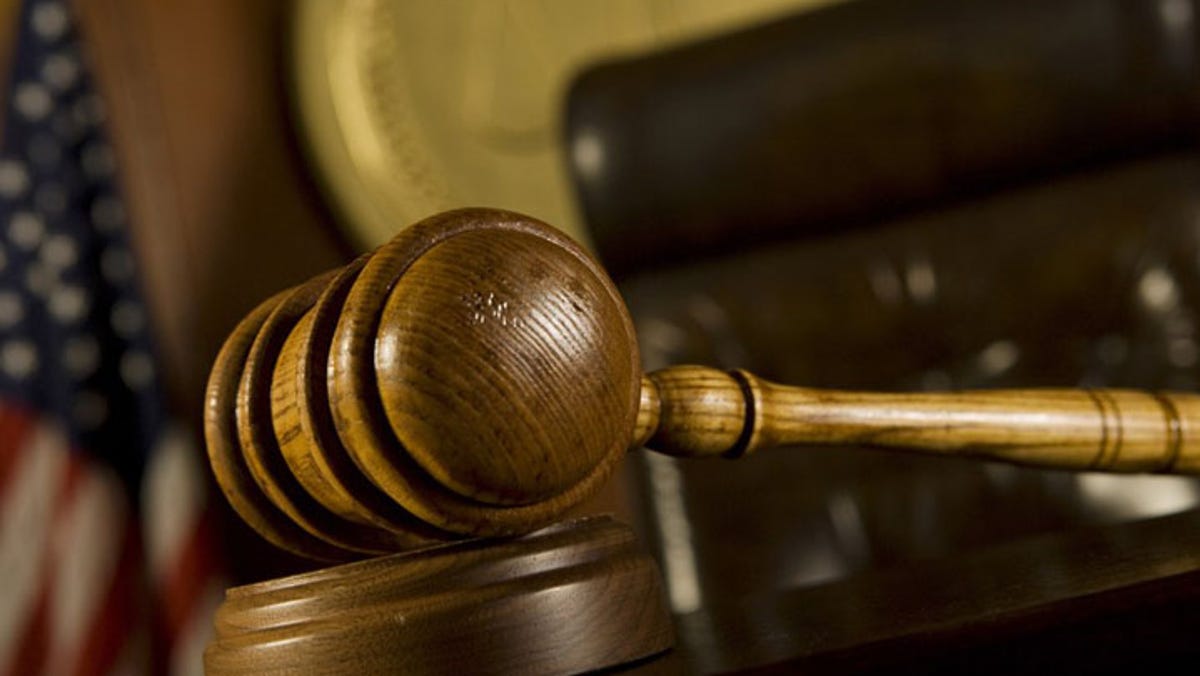
The YMCA of Central Texas faces a lawsuit claiming that one of its day care workers injured a 2-year-old boy.
The day care worker named in the lawsuit, 45-year-old Geraline Browning, was charged this month with four counts of injury to a child and one count of assault in connection to hurting at least three children at a day care in North Austin, according to arrest affidavits.
All of the charges are third-degree felonies punishable by up to 10 years in prison.
The day care is operated by the YMCA for full-time staff members of the Pflugerville school district, according to a district website. It said child care is provided for children from age 8 weeks up to 4 years old.
One of the criminal charges against Browning includes the abuse against the 2-year-old in the lawsuit, said Joe Caputo, the lawyer representing the boy’s mother. The lawsuit was filed Friday and seeks more than $1 million in damages.
More: Austin woman charged with injury to child after 3-month-old’s death
The YMCA does not comment on pending litigation, said Dana Driver, a spokeswoman for the organization.
Browning has been fired, said Laura Arredondo, the chief marketing officer for the YMCA.
“We have terminated an employee after reviewing evidence of physical aggression directed at several of our students,” Arredondo said. “We immediately alerted the parents, CPS and the local authorities. The well-being of our students is our utmost priority and fortunately, these children are safe. We follow the state’s guidelines on safety and run extensive background checks before hiring employees. The YMCA of Central Texas is committed to ensuring the safest possible environment for our families and will work tirelessly to that end.”
More: Texas fined $100k per day for failure to investigate foster care abuse
Caputo said Browning chased the 2-year-old boy around the day care and placed hands around his neck in a “choking fashion.” Police began investigating Browning after a Pflugerville school district employee began watching surveillance video of the day care in February because she was looking for a missing pair of shoes, one of the affidavits said.
She saw Browning on a video on Feb. 21 choking a child, the affidavit said. The day care is at Northwest Elementary School, at 14014 Thermal Drive in North Austin, which is in the Pflugerville school district.
The video also showed Browning grabbing a girl by the arm and shaking her, according to the affidavit. Browning later told a Pflugerville police detective she was anxious and “overreacted,” the affidavit said.
Other video surveillance from the day care showed Browning grabbing another child from behind by the neck and spinning the child around before forcing the child to the floor on Feb. 12, an affidavit said. Browning also was seen on Feb. 7 in a video grabbing a child around the neck and chest, according to an affidavit.
More videos in February showed Browning grabbing a 2-year-old girl by the neck and the collarbone and putting her on the floor, and also walking into the same girl causing the child to hit her forehead on a cabinet, an affidavit said. Another video from the day care in January showed Browning yanking the same girl off a stool by her arm, according to an affidavit.
Caputo called the facts in the Browning case “troubling.”
“Families in this community trust that the YMCA will care for their children,” Caputo said. “The YMCA facility betrayed that trust. We intend to get to the bottom of what happened so that this never happens again.”
Austin, TX
Texas Attracted California Techies. Now It’s Losing Thousands of Them.
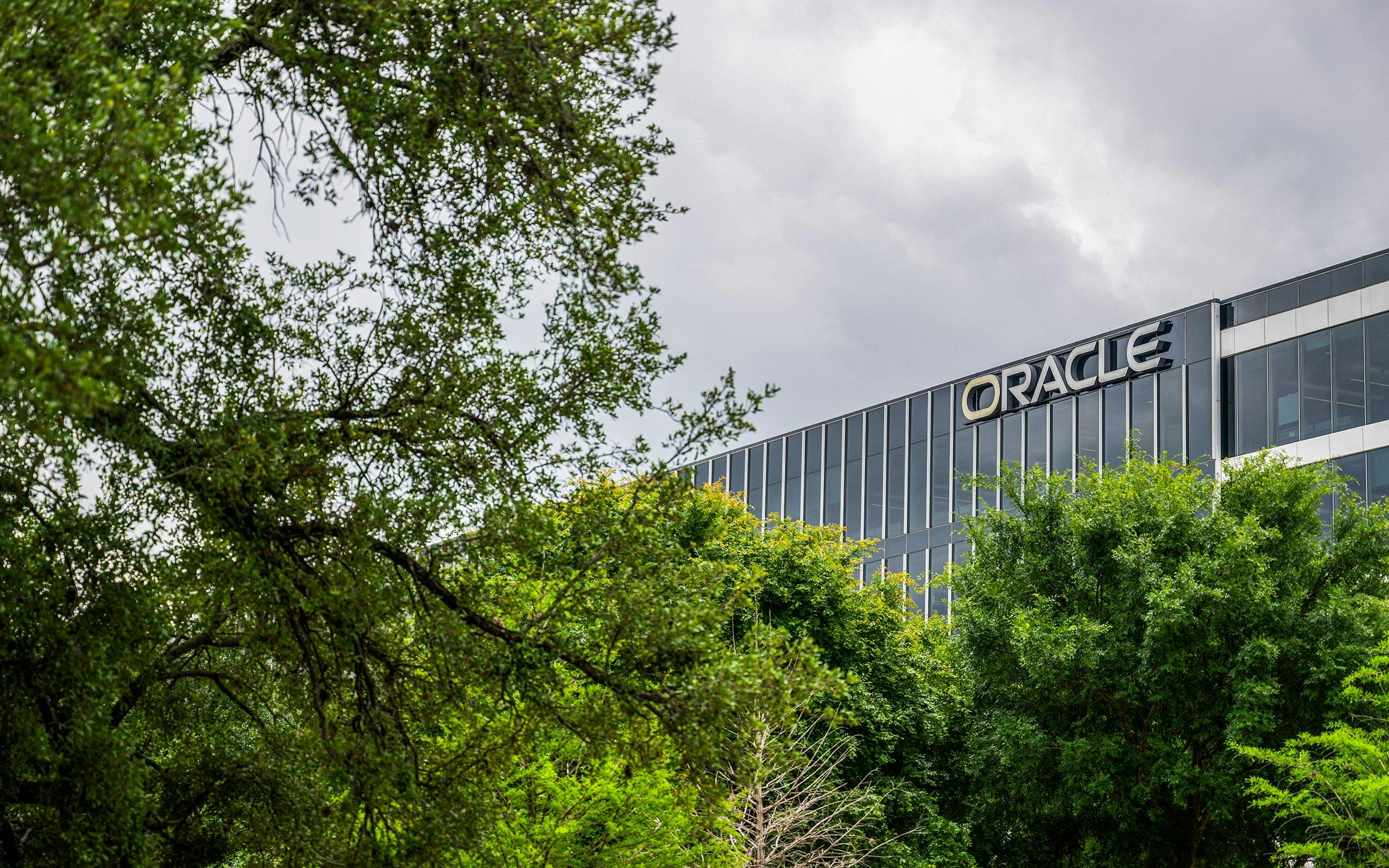
Back in the halcyon days of 2020, a year we all remember fondly, a new flash point opened in the enduring war between Texas and California. Technologists started picking up sticks in Taxifornia and moving to the Lone Star State in greater numbers. The enemy’s chief newspaper, the Los Angeles Times, worried that Silicon Valley’s “monopoly” was over and wondered if Austin was “the future.” Governor Greg Abbott declared Texas was “truly the land of business, jobs, and opportunity.”
In the wave of stories about Austin’s ascension in 2020, there were always two pieces of evidence given top billing. That year the tech goliath Oracle relocated its HQ to Austin, where it had already built a massive campus on the south shore of Town Lake, and Elon Musk began building a gargantuan Cybertruck factory just outside the city. Austin-area authorities helped Oracle secure valuable lakefront real estate and offered Tesla some $60 million in tax abatements, including $50 million from the historically struggling school district in Del Valle. The new facilities were greeted by state officials as evidence that the “Texas Miracle” was alive and well. Abbott proudly proclaimed last year that Austin was “THE destination for the world’s leading tech companies.”
This week saw a major plot twist in that narrative: Oracle declared it was moving its headquarters to Nashville, and Tesla—the largest private employer in the capital city—announced it would be laying off almost 2,700 workers from its Austin plant after a disappointing earnings report. Texas wasn’t really at fault here. Oracle, which makes business software, cited Nashville’s strength as a center of the American health-care industry, though it surely also helps that the company is getting nearly a quarter of a billion dollars in tax breaks and incentives from the city and the state of Tennessee. Tesla, meanwhile, laid off workers across the country after the Cybertruck suffered significant quality issues that put the future of its Austin production facility in doubt. The city’s debut in auto manufacturing is a vehicle that apparently rusts in the rain. The factory complex, which Musk once promised would become an “ecological paradise,” recently took advantage of a new state law to exempt itself from Austin’s environmental regulations.
But while hard financial realities explain the HQ move and the layoffs, the news also evidences a moment of cultural change: the sudden hotness Austin enjoyed in 2020 has dissipated, at least a bit, into notness. In the mad summer of 2020, tech evangelist Joe Lonsdale wrote that Texas stood as a new frontier in the fight for human freedom and vowed to build a new city outside Austin to serve as a safe haven for disruptors, like other utopians who have been coming to the state for centuries. But, it turned out, after the COVID-19 pandemic, there was more utility in the status quo. When in-person work came back, rubbing shoulders in Palo Alto became more valuable to tech leaders. And while Lonsdale remains, many members of his tribe started heading home.
In December, perhaps not coincidentally after Austin’s most miserably hot summer ever, TechCrunch wrote that start-ups were fleeing the city, which was “losing its luster.” Not surprisingly, some of the Californians who moved here during the pandemic realized they had traded Edenic weather for 110-degree summers and no income tax, and they decided that the income tax wasn’t that bad. That was reflected in the tech industry’s financials. Venture capitalists invested $6.75 billion in Austin start-ups in 2021, but in 2023 they invested only $3.8 billion. (Funding also fell in Palo Alto amid an industry-wide crunch, but the Bay Area remained king by far, with companies there raising more than $60 billion in investment in 2023.)
Oracle’s decision to move its HQ out of Texas after less than four years is a reminder that trying to lasso global companies is like trying to wrestle the wind, and that the economic-development incentives that were so vaunted here earlier this century can only do so much. Austin will most likely continue to grow, of course, but the end of this particular hype cycle coincides with a ground shift in the state’s political identity.
For the first two decades of the century, what it meant to be Texan—as explained by the state’s politicians—was largely wrapped up in a feeling of competition with California. The state’s “wins” were often counted by how many new residents and companies Texas could induce to move here from the Golden State.
Governor Rick Perry was the main figure associated with this contest: he bragged endlessly about the deals he had struck with CEOs from colder and more heavily income-taxed states, and even about the rising price of in-demand U-Haul rentals from San Francisco to Dallas. He took credit for the growth of the Texas economy, the primary accomplishment of his fourteen-year stretch in office. Abbott picked up the baton, and Senator Ted Cruz has sought to share in the glory. The political culture of the state was oriented around attracting newcomers at any cost, even if the effort got a little ridiculous.
In 2014, the producer of the hip Sriracha Hot Chili Sauce, Huy Fong Foods, got into trouble with the local authorities in Irwindale, California, near Los Angeles. The problem: residents said the roasted chile fumes from the factory were giving their eyes and throats hell, and the city sued the company to try to make it curb its emissions. (The company denied responsibility and hung a banner outside its headquarters reading, “No tear gas made here,” but air-quality regulators promised to investigate.) “[That] would not happen in Texas,” said then–state representative Jason Villalba, a moderate Republican from the Dallas area. He led a delegation of Texas lawmakers—two state representatives, a state senator, and officials from the governor’s office, the attorney general’s office, and the Texas Department of Agriculture—to beg Huy Fong to relocate to some part of Texas where the residents would be grateful.
The delegation did not succeed: the factory’s owner used the Texans as leverage to negotiate with California authorities and sent both groups packing. Nearly every statewide politician in the Lone Star State, however, agreed that this kind of effort was valiant, even as theater: the state’s role was to encourage new businesses and new folks to move here, even if the transplants inspired grumpy jokes.
That belief has dissipated. The right wing in Texas has changed how state officials view newcomers and the very prospect of economic growth. That shift accelerated at the start of the pandemic, when hostility to Californians and transplants had become more commonly expressed by Texas politicians. Republicans are now just as likely to promise to protect Texas from Californians as to celebrate winning them over. At a rally this spring, Perry noted that Texans frequently approach him to blame him—even if jokingly—for all the out-of-staters they have to deal with now. Last Friday, the Republican Party of Texas (run by a transplant from Connecticut) sent a fund-raising appeal that began with the declaration that “Joe Biden is flooding Texas with migrants & Californians.”
This generation of Republican leaders, most prominently Lieutenant Governor Dan Patrick—himself a transplant from Baltimore—is less prone to seeing economic growth as a goal in and of itself. The state GOP has grown increasingly skeptical of business interests, which often favor moderate Republicans and a timid approach to the culture wars. When Rick Perry left office, the Legislature kneecapped his most treasured economic development: slush funds.
Recent sessions saw a prolonged fight over the future of the Chapter 313 tax-incentive program, created in 2001, which authorized property tax breaks to induce large businesses to relocate here. The Legislature allowed the program to expire in 2022 and then revived it in a new and shrunken form that went into effect this year. While Abbott blamed the loss of a major semiconductor plant to New York on the lapse of the program, Patrick was quite proud of the death of Chapter 313, which he said had been “misused.”
More than just the mood of the Legislature has changed. While many Texans don’t like Californians, those who use the word as a curse are generally using it to describe all newcomers, much like those who call brown migrants “Mexicans.” Though no polling will tell you so, and though those who are angry about newcomers may not themselves make the connection, there’s a good case to be made that the fear of both Latin American migrants and American transplants comes from a general sense of economic instability. Texas overall has gotten much wealthier this century. But that wealth has been distributed unevenly. The cost of living in the state’s cities has skyrocketed: home prices have risen faster in Austin than in Los Angeles this century, according to Federal Reserve data. In the last decade, housing prices in DFW more than doubled, while the median income only rose 45 percent. Chicago is now a better bet for would-be homeowners.
Meanwhile, Texas is not a low-tax, low-service state, as is commonly held. It’s a high-tax, low-service state: we may have no income tax, but at least one study found that we have one of the ten highest total tax burdens in the nation, with property taxes making up most of the gap. The quality of state services, however, has not improved commensurate with the growth of state budgets. Older Texans feel squeezed in cities where they’ve lived for decades. Younger Texans go to too-often substandard schools, receive substandard health care, and then can’t afford homes in the cities of their birth. Texas politics has increasingly focused on managing the resulting resentment, and the easiest way to do so is to blame outsiders.
But that puts state leaders in a bind. The state’s economic model is dependent on cheap migrant labor, skilled workers from out of state, and the regular infusion of new capital. Transplants are twice as likely as native Texans to have a bachelor’s degree. They live in homes built by, and eat at restaurants staffed by, undocumented migrants. The growth that results helps everyone, but it benefits some much more than others. “All boats rise,” Steven Pedigo, a professor at the LBJ School of Public Affairs at the University of Texas at Austin, told Texas Monthly in 2021, “but not all boats rise enough and rise fast enough” to account for rising costs of living. So even in the good times, you have burgeoning resentment. Problems accruing from the population surge go unaddressed as the Legislature stumbles from budget surplus to budget surplus.
Smarter anti-immigration conservatives make the case that by using foreign labor to solve America’s skilled-labor shortages, the country stifles the process by which native Americans might be trained up to meet skilled-labor demand. We import doctors and engineers because it’s cheaper than training our own. Whether that’s true or not, Texas is doing something similar with “Californians.” The state stinks at developing its own labor force. And why should we bother when we can poach workers from other states?
But no boom lasts forever, and Oracle’s departure is a reminder that folks can move in both directions. What happens when the influx slows—and we’re left with our own atrophied mechanisms for generating growth? Well, we can do what Americans have always done. We can hitch the U-Haul to the Cybertruck and hit the road.
Austin, TX
A local’s travel guide to Austin: what to eat, see and do in three days

Austin has become one of the most popular places in the US to move to, and also to visit. Droves of people descend on the city in March for the South by Southwest tech, film and music festival and in the fall for the Austin City Limits music festival. And Austin is one of the top five destinations in the US for bachelorette parties. Don’t let the bachelorettes scare you away, though. Austin is a great place to spend a few days, so long as you do it like a local.
My family and I moved to Austin 12 years ago, after living in New York for many years. I’ve also lived in Washington DC, the San Francisco Bay Area and Philadelphia. Austin has a feel all of its own: it has a world-class music scene, great food that now goes well beyond Tex-Mex and barbecue, Texas history and fun shopping and museums – all with less hassle than bigger cities in the US.
Here’s my guide to a long weekend there. In addition to picks for adults, I’ve included some recommendations for families that our kids (now teenagers) have loved through the years. And I’m vegetarian, so I’ve chosen some of the city’s best veggie eats options. Don’t worry, my meat-eating wife made sure that I included great barbecue choices, too.
Day 1: Pool party & pickles
Start your day with a walk or run on the trail at Town Lake (it’s officially labeled on maps as Lady Bird Lake, but locals refer to it as Town Lake). This 10-mile (16km) trail on both sides of a dammed portion of Texas’s Colorado River (a different Colorado River than the bigger and more famous one) is tree-shaded, beautiful and one of Austinites’ favorite places to exercise. If you have time, walk through Zilker Park, which is right next to the trail. If you have kids, go to the new and very fun playground at Butler Park, complete with a splash pad just up the path from the playground.
Austin was one of the cities that started the food truck scene in the US several decades ago, and now there are more than 2,000 food trucks in the city. Some are located in trailer parks that have multiple truck options and picnic table seating. After your morning at Town Lake and Zilker Park, have lunch at the Picnic food truck park, or the nearby original location of local favorite Chuy’s (the Tex-Mex chain is now expanding throughout the US). Other great lunch options include Green Mesquite and Carpenters Hall.
In the afternoon, go for a swim at Barton Springs Pool. Open year-round, this massive basin measures three acres and is fed by underground natural springs. It’s open throughout the day, and it’s free before 8am and after 9pm.
Head back to your hotel or Airbnb for a rest, and then get ready for dinner. Tonight is casual: barbecue at Terry Black’s, or if you’re vegan, the food truck Rollin Smoke for a fantastic vegan barbecue sandwich made with baby portobello mushrooms, spicy slaw, barbecue sauce and pickles. It’s my favorite vegan barbecue sandwich in Austin (who says you can’t have barbecue if you’re veggie?), and it’s located in a food truck park with beautiful old trees shading the tables. Rollin Smoke has very good meat options, too (I’m told).
If you have young children, head to Phil’s Icehouse. They have burgers and a full playground where the kids can play before or after dinner. Just don’t put them on the spinning flower after the meal. And be sure to get some ice-cream after dinner at Amy’s Ice Creams, a longtime favorite of Austinites. Amy’s is located next to Phil’s, and it’s so good we had an Amy’s truck serve dessert at our wedding.
After dinner, head out to see some music at one of Austin’s many local music venues. One of our favorites is the Continental Club. There’s a main club downstairs and the intimate Continental Gallery upstairs, where you can see local musicians in a cozy space. Other great venues include C-Boy’s and the new Moody Amphitheater. For full local music listings on any night, check the Austin Chronicle. And if it’s summer, look to see if Blues on the Green has a free concert that night. If you have kids, take them to the free Rock the Park concert series, produced by local radio station KUTX.
Day 2: Breakfast tacos, books & bats
Start your day back at the lake with a rowing workout that’s almost, but not quite, on the lake. Rō Fitness is a local studio that has outdoor rowing classes by the water. It’s way more fun than working out at an indoor studio.
You’ll need fuel after your workout. Grab a breakfast taco at Veracruz or Tacodeli or Tamale House East. Breakfast tacos are an Austin staple (they are to Austin as bagels are to New York), and all three of these places have delicious options.
Today is a shopping day. Start out at BookPeople, one of the greatest bookstores in the US. It’s locally owned and independent, but the size of a superstore. BookPeople also dares to take a stand on issues, including being one of two bookstores that recently sued Texas state officials over a newly passed book ban law. It has an excellent kids section, and organizes live readings by kids’ authors.
After you’ve gotten your book fix, head across the street to Waterloo Records, one of the best record stores in the US. Waterloo carries new and used vinyl, CDs and merchandise from rock to jazz to local Texas music. For more shopping options, head over to the stores along South Congress Avenue and South First Street (including Roadhouse Relics, a neon art store and gallery that is one of our favorites), and if you want to go thrifting, our teens say Austin Pets Alive Thrift and Texas Thrift are the best.
After all of the shopping, it’s time for lunch. If you’re near BookPeople and Waterloo, head over to Soup Peddler, a local place for homemade soups, smoothies and fantastic grilled cheese sandwiches (trivia: Soup Peddler got its name because the founder started out delivering homemade soup by bike before opening full store locations). Or if you’re near South Congress and South First, go to the food trucks on South First or Underdog or Fresa’s (which has a fun kids’ playground).
As you’re heading back to rest up, grab an ice-cream at Amy’s, a gelato at Dolce Neve or cupcakes at Sugar Mama’s.
Some good dinner options for tonight include Loro, Suerte or Este. And if you’re looking for a vegetarian option, one of my favorite veggie restaurants is Bouldin Creek Cafe. It’s casual, with a great menu that includes vegan chips and queso. If it’s nice out, take a seat on the patio.
Tonight’s activity could be going to see the bats at the Congress Street Bridge. Austin has the largest urban bat colony in North America, and in season they live in one of the bridges that crosses the Colorado River (they migrate to Mexico in the cooler weather). Bat-watching is a lot more fun than you might imagine from horror movies (and these bats look more like birds than vampire bats). If you’re not in the mood for bats, head to the legendary Broken Spoke. Get there early for dance lessons, then hoof it at this classic Texas honky-tonk.
Day 3: Live oaks & Lady Bird wildflowers
It’s your last day in Austin, and it’s a good one for visiting a museum. Some of our favorites include the Bullock Museum to learn all about the history of our state (bonus fact: Texas was once its own country, and some people want it to be its own country again). If you’re a fan of 1960s history, visit the excellent LBJ Presidential Library, which is the home of the 36th president’s papers. It has good exhibits on the US civil rights movement and 1960s US history in general. Another excellent museum option is the Blanton Museum of Art, or you could tour the Texas capitol (Austin is, after all, the capital of Texas). If you’re a nature fan, head to the Lady Bird Johnson Wildflower Center. And if you have kids, the Thinkery is an excellent children’s museum.
For lunch, it’s time for more barbecue (you’re in Austin, don’t fight it). Two terrific barbecue trucks are Mickelthwait and LeRoy and Lewis. And LeRoy and Lewis has another of my favorite vegetarian barbecue options: cauliflower burnt ends.
In the afternoon, head back to Town Lake. This time, get out on the water by renting a kayak, stand up paddleboard or paddle boat (a kid-friendly option). If you have time and energy for a drink, head over to the ABGB for happy hour. They have a great beer selection, lots of outdoor seating and local bands playing music.
For your farewell dinner, a few of our favorite restaurants that are a bit on the fancier end are Hestia, Uchi or the Lenoir wine garden, where dinner is served under live oak trees more than a hundred years old. And for a fantastic vegan option, go to Fabrik for a seven-course vegan tasting menu. You’ll need a reservation well in advance (they’re currently booking four to six weeks out). And for your final night in Austin, head out to another music venue. Or if you have kids, take them to the Austin favorite Peter Pan Mini Golf, which has been around for 75 years, or check Do512 Family for family events that are happening the dates you’re in town.
Question Time
When is the best time of year to visit Austin?
There’s no dispute: it’s hot in the summer in Austin. A great time to visit is between October and May. From June through September, many days will be over 100F. If you’re here in the summer, spend lots of time at the Barton Springs pool.
Is Austin expensive?
Austin hotels can be expensive during big events like South by Southwest or the Formula One weekend. But for most dates, it’s less expensive than larger cities like New York, Los Angeles and San Francisco.
Will I need a car to get around Austin?
Most of the places that I’ve recommended are within walking distance from downtown. You can also rent bikes and scooters to get around. Austin’s public transportation is primarily through local buses, which can take you further out if needed. And car-share options are easy as well.
-
Steve Sachs is managing director of the Guardian US. He has worked at large and startup media companies for more than 20 years. He loves all kinds of music, and his most recent favorite concert, the Texas Songwriters Hall of Fame Show, featured a host of singer-songwriters including Lyle Lovett and Emmylou Harris
-

 Movie Reviews1 week ago
Movie Reviews1 week agoMovie Review: The American Society of Magical Negroes
-

 News1 week ago
News1 week agoGOP senators demand full trial in Mayorkas impeachment
-

 World1 week ago
World1 week agoIf not Ursula, then who? Seven in the wings for Commission top job
-

 World1 week ago
World1 week agoCroatians vote in election pitting the PM against the country’s president
-

 World1 week ago
World1 week ago'You are a criminal!' Heckler blasts von der Leyen's stance on Israel
-

 Movie Reviews1 week ago
Movie Reviews1 week agoPon Ondru Kanden Movie Review: This vanilla rom-com wastes a good premise with hasty execution
-

 Kentucky1 week ago
Kentucky1 week agoKentucky first lady visits Fort Knox schools in honor of Month of the Military Child
-

 Politics1 week ago
Politics1 week agoTrump trial: Jury selection to resume in New York City for 3rd day in former president's trial
